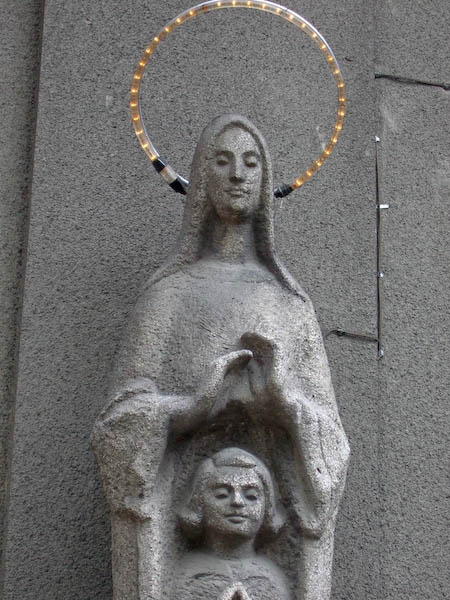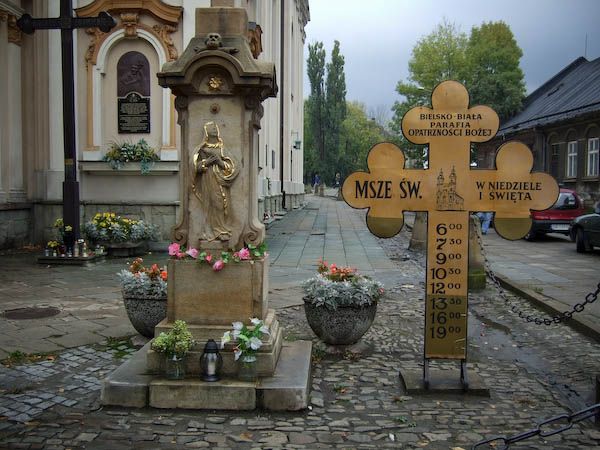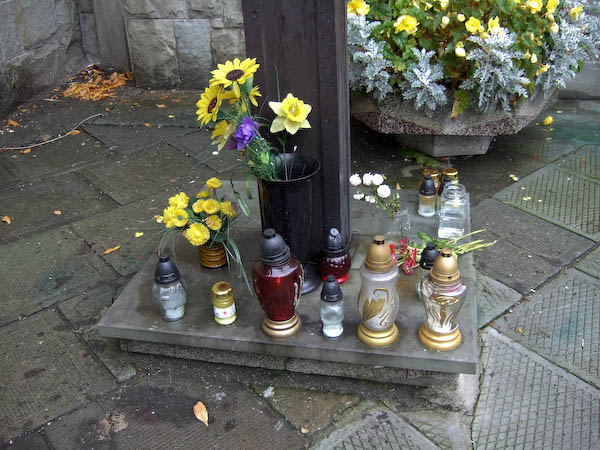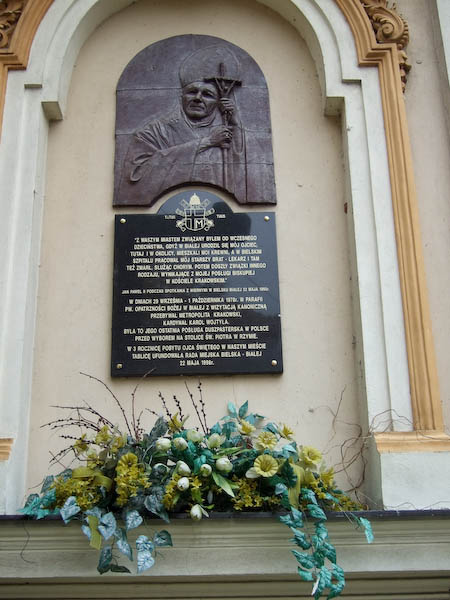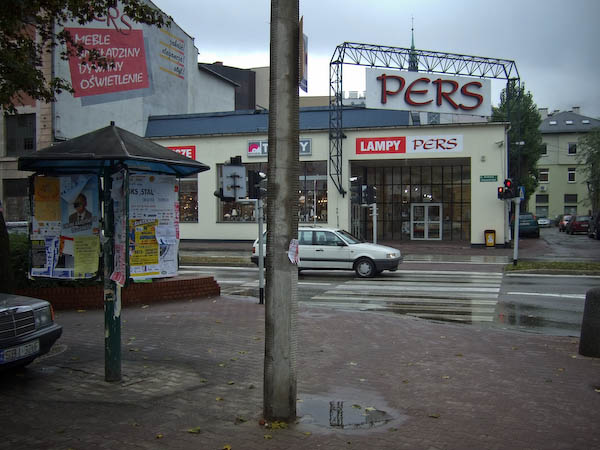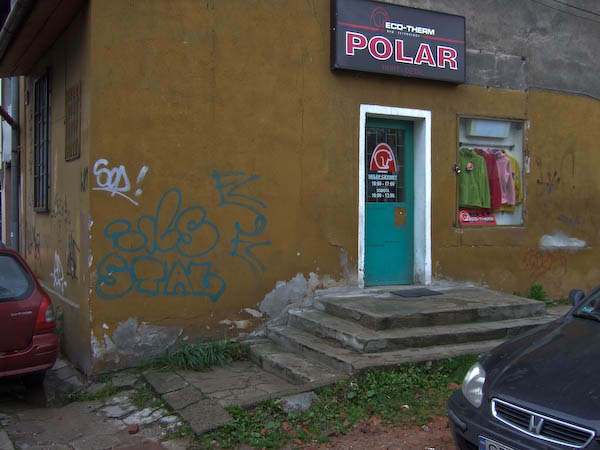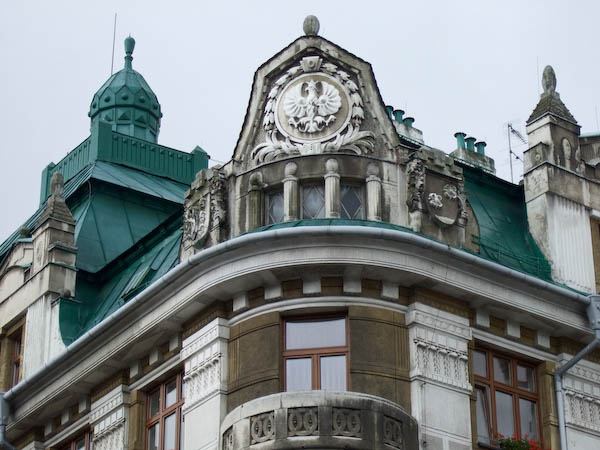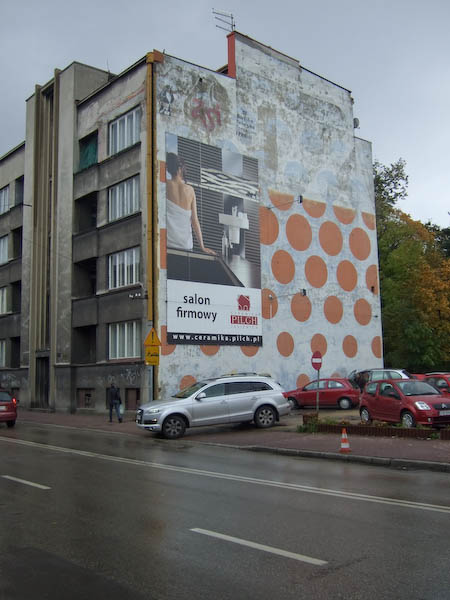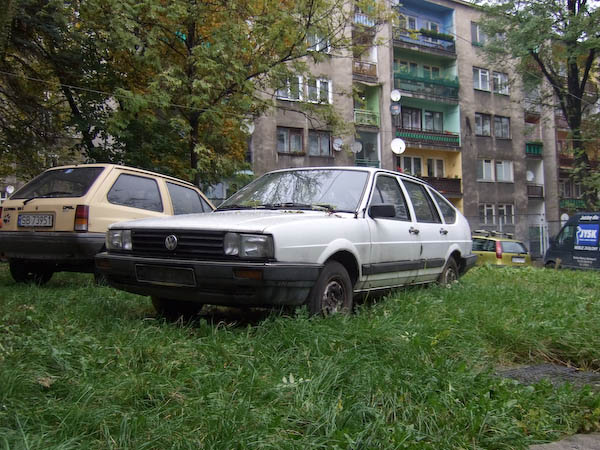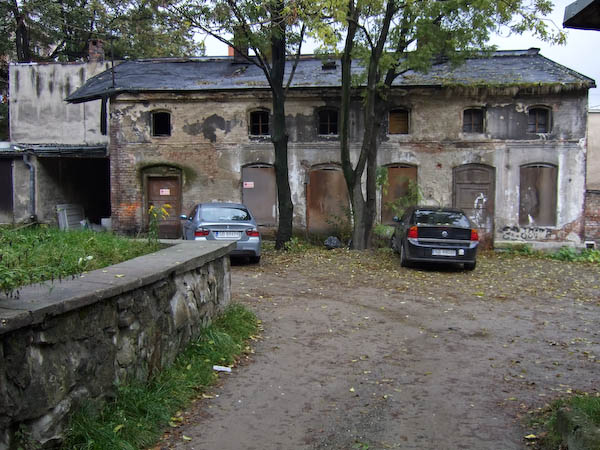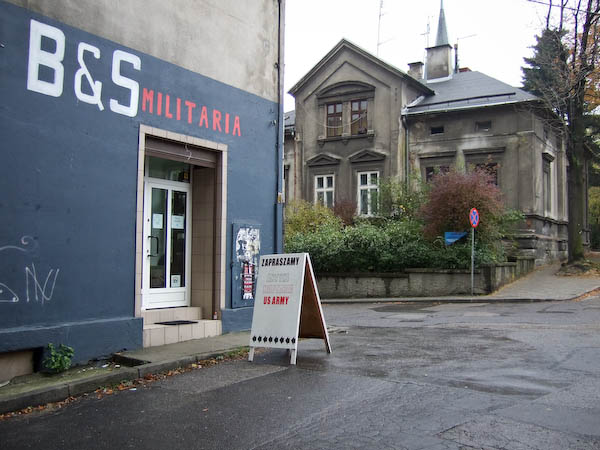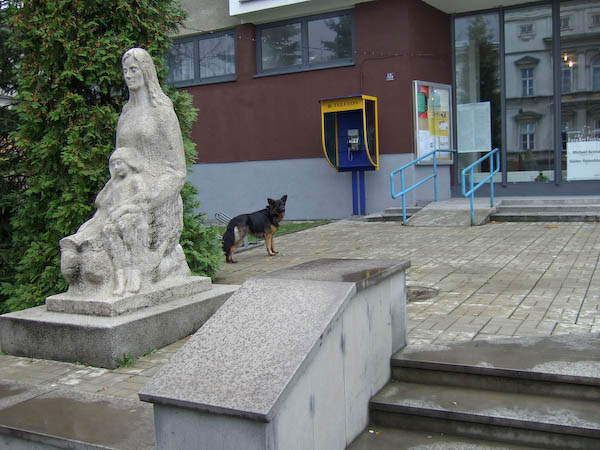FotoArtFestival 2007
I collect the things I'll need for the afternoon from the hotel and
decide to take a walk past the splendid Church of Divine providence
before turning back towards the bridge over the Biala river and the
Ksiasnica Beskidzka in Slowackiego and the school next door that that
also housed some of the exhibitions where I had arranged to meet Kate
before going to lunch at the Prezydent hotel.
For me the "Message from the Heart" from Walter
Rosenblum was the most powerful show of the festival. My
feature on him is unfortunately missing from the 'Wayback Machine',
although you can access my piece on the New
York Photo League there.
Its an occasion that has a tinge of sadness, as Walter died in 2006,
otherwise he would have been here to see his work on the wall. But both
his wife, the prominent photo-historian Naomi Rosenblum and
his daughter, the outstanding film-maker Nina Rosenblum (her
films include those on her father and on Lewis Hine) are due to arrive
in Bielsko today. You can see work by all three on the Rosenblum
Photo web site.
What is amazing about this work is that Walter was only 17 when as a
young Photo League member he took the Pitt Street pictures here,
inspired by the advice of Sid Grossman who taught the
documentary workshop at the League. Although there were many great
pictures later in his life, these still seem to me his strongest
collection of work, in some ways summing up his whole career at its very
start.
In 1938, he became friends with both Lewis Hine and Paul Strand through
the League, and both men were important as mentors, strengthening his
ideas about photography and widening his cultural and photographic
horizons.
His relationship with Strand perhaps shows most strongly in some of his
fine portraits, and also in the work from Gaspe, which I later learn
from Naomi was a kind of late honeymoon, for which Paul Strand lent them
his car.
There is also a picture from '105th Street', a family arranged
along the house-front, which has strong which, although clearly
different, has strong resonances in Strand's Italian family in Luzzara,
in his 'Un Paese' ( Walter's version has a scooter rather than
a bicycle.) Rosenblum's 105th St image was made in 1952, while Strand's
classic work came the following year. It was an influence that flowed in
both directions.
One of Walter's great achievements was in capturing the great joy of
children playing, in images of games on the street and elsewhere,
perhaps most elequently in his image of a girl on a swing, a great
feeling of freedom as she stretches out close to horizontal, the chains
of the swing echoed by those of the bridge in the background.
But my favourite image perhaps remains the animated group in front of Chick's
Candystore in Pitt St. A group of men stand around passing the
time of day, while as bookends to the storefront are at left a woman
seated on a chair, looking cold and staring grimly away out of picture,
and on the right a small black child leans forward to the edge of the
frame, his bottom towards the group.
A man's hand floats apparentlly free of its owner in surreal fashion in
the centre of the image against the black of the doorway as he makes a
point, while inside the shop another hand - perhaps Chick's own -
appears reaching up apparently towards the name on the glass, next to it
a hat, but faceless.
NEW POLICY
MORE
SHOW!
reads a sign in the bottom right of the shop window, and I think it can
only refer to this picture.
(The following day I came back to view this show again, together with
Naomi and Nina - see later in this diary.)
A fine monograph of Walter's work was published in Dresden in 1990.
Landscapes
I first saw Michael
Kenna's work in a show on Richmond Hill in I think
1976, and looking at it now in the room next-door to Walter Rosenblum's
pictures it was interesting to see how little both Kenna's approach and
my opinions seemed to have changed little.
There were many elements in common with the Chinese work I had viewed
earlier in the morning. Islands, water, mist, distant mountains, strong
simple composition.
Back then I'd thought it showed superb technique, but was somehow too
simple, too dramatised, too decorative and was likely to sell extremely
well. It did, although he had to move to the USA and get deeply into
limited editions to do so*.
To be fair, he has refined his technical skills considerably. But
immaculate though many of his conceptions are, I find the artificial
tonalities and slight pink lith of the lighter tones soon palls.
There were a few images that interested me. I think we share a love of
fine trees. I liked particularly a snow-covered example surrounded by a
circular hedge and the outstanding work of this show for me was a simple
winter silhouette of a fine specimen taken in slight mist, set in a
formal garden on a frosty morning. Elegant but unforced, it was an image
I would gladly hang on my wall.
(* I've always felt there was something inherently evil about the idea
of limited editions in photography, or rather something inherently
anti-photographic. We have a medium that allows almost infinite
reproducibility and I think should work with it, and not get into the
world of marketing. But then I long ago chose idealism over riches.)
Father and Son
I'd met Jose Luis Ra ota the previous evening but had
only the vaguest memory of the work of either him or his father, Pedro
Luis Raota (1934-86), despite having written in the past
about photography in Argentina, although I'm afraid to say I had
mentioned neither of them.
When I saw the work on the wall however, there were several pictures
that I recognised. You can view both on the Raota
fotografia web site.
I only had time for a quick look at the show, and wrote about it later
during the festival.
Franco Fontana
Fontana
(b1933) is another photographer whose work while sometimes of interest
is not entirely to my taste. An over-fixation with pattern is perhaps
not a great asset for a photographer, although it does produce images
with impact and popular appeal. One or two of his landscapes are indeed
attractive, but a whole wall is overkill so far as I'm concerned.
More to my liking were his pictures from various American cities - Lost
Angeles, Houston, Chicago etc - in which a single female figure is seen
from behind as the only person in an urban environment. At least in some
of these I felt a slight sense of menace.
In the 'Presenzassenza' series also, his use of shadows also
adds a little sinister depth to some of the images.
Time for Lunch
I'd arranged to meet Kate in the Fontana show at 1.30pm, but before she
came, Sarah Moon arrived and we exchanged greetings. She too was going
to lunch, but wanted to look at the pictures, and Kate and I, being
hungry, left her there saying we would meet at the Prezydent.
(continued on next page.)
